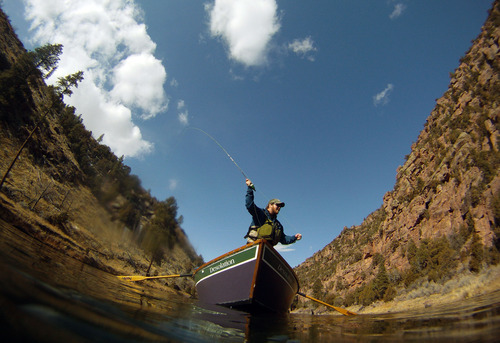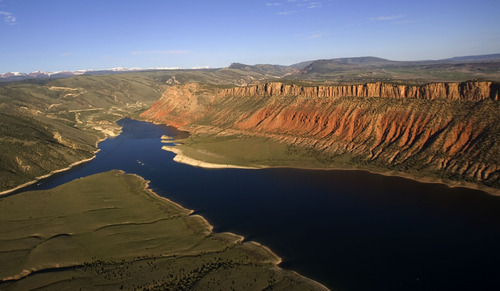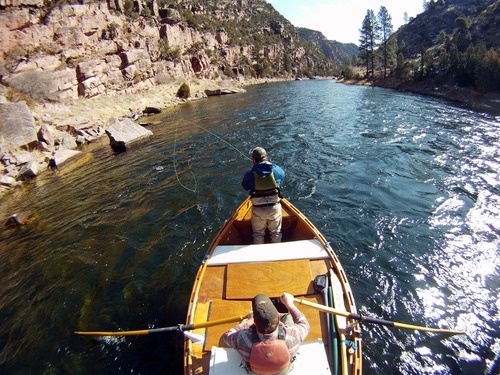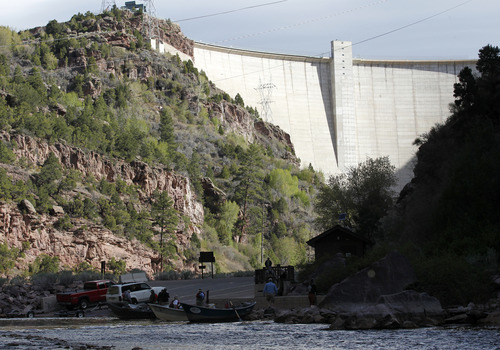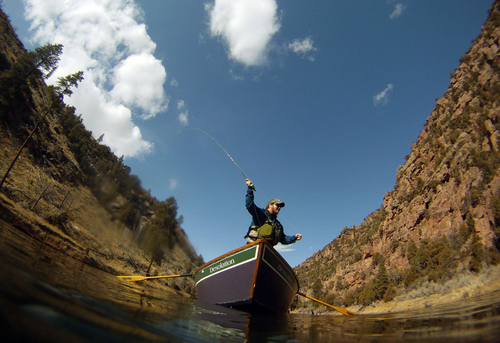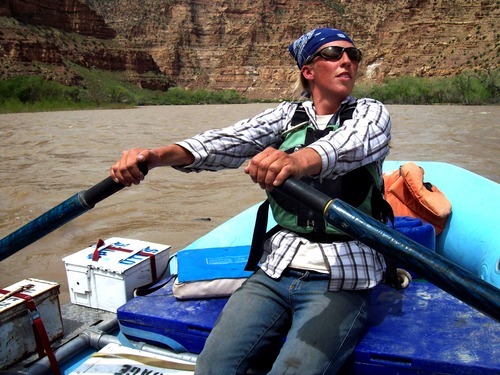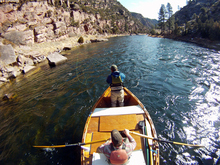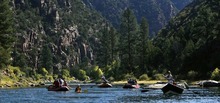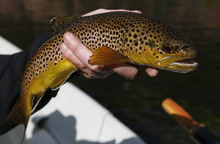This is an archived article that was published on sltrib.com in 2012, and information in the article may be outdated. It is provided only for personal research purposes and may not be reprinted.
The Green River in Utah provides white-water thrills, sweet watermelon, trophy fish and stunning scenery.
But proposed pipelines and a nuclear power plant that would remove huge portions of water from the river threaten those benefits and everything else the precious water of the Green provides, according to a new report.
The report, by American Rivers, places the Green River at No. 2 on its list of America's Most Endangered Rivers of 2012.
The greatest threat to the river — which meanders about 730 miles from its headwaters in the Wind River Range in Wyoming through Utah, Colorado and back into Utah where it ends in a confluence with the Colorado River in Canyonlands National Park — is the proposed Million pipeline, says the report. That project would pump more than 250,000 acre-feet of water from the Green River 500 miles across Wyoming to the Front Range area of Colorado. While the Federal Energy Regulatory Commission rejected the proposal in February, developer Aaron Million requested a rehearing of the plan.
"Water in the West is critical to more things than just fueling speculative urban growth," said Nathan Fey, director of American Whitewater's Colorado River Stewardship Program. "While the Green River is viewed as a solution to Colorado's future water shortage, the river today supports a diverse economy, sustains rare wildlife and endangered fish populations and offers unique opportunities for people to experience how water interacts with the landscape."
A second Colorado-based pipeline proposal is also in the works and opponents of any pipeline that takes water from the Green fear the West's ever-growing demand will lead to endless attempts to push similar projects.
As the largest tributary to the Colorado River, the Green is subject to laws created by the Colorado River Compact of 1922. Seven states in the Colorado River Basin and the federal government agreed to the compact. Colorado was given the majority of rights to water from the Colorado River and it is under those rules that the pipeline proposals are even being considered.
A planned nuclear plant near the town of Green River poses another threat, says the report, with its need for an estimated 53,000-acre feet of water annually. American Rivers said oil shale, tar sands and natural gas development along the Green River corridor also pose major threats to the river's ecosystem.
The economic value of the Green River is a hard thing to determine, but according to Trout Unlimited, the Flaming Gorge Reservoir on the Utah-Wyoming border, and the river above and below it, are worth a combined $118 million a year to the economies of Uintah and Daggett counties in Utah and Sweetwater County in Wyoming. American Rivers says white-water rafting alone on the Green River is worth $4.3 million in economic benefits.
The proposed pipelines and nuclear plant are the obvious threats, but there is another, more subtle one, said Zach Frankel, Utah Rivers Council executive director.
"Frankly, [Gov. Gary Herbert] has been mum on speaking on behalf of Utah for these water threats," Frankel said. "We need a strong advocate for the recreational and agricultural economic benefits of the Green River. Not having our governor fighting for the Green is one of its greatest threats."
Wyoming Gov. Matt Mead has said the proposed pipelines are not a responsible use of taxpayer money. American Rivers, an organization dedicated to protecting and restoring the nation's rivers and streams, wants to see Herbert and Colorado Gov. John Hickenlooper join Mead in defense of the Green River.
Herbert in January said his staff was following the Million pipeline issue closely, but Utah political leaders have not taken a formal position. American Rivers said polls in Utah and Wyoming have revealed the pipeline project is "extremely unpopular among the public."
"The Green and other rivers in the arid Southwest are treasured resources," Alan Matheson, Herbert's environmental adviser, said Tuesday. "We ask them to do a lot — grow our food, quench the thirst of growing populations, generate power, provide recreational opportunities and sustain riparian environments and fish. We all need to help our rivers by using our limited water supply wisely."
In January, Utah State Engineer Kent Jones gave the OK for a water transfer plan that allows the nuclear power project to move forward to seek federal approval. That decision — the only one in which state leaders have a formal say — is now the subject of lawsuits brought by environmental groups.
Aaron Tilton, a former state lawmaker who heads the company developing the planned power plant, says the river has plenty of water to accommodate the project without harming the environment or other uses.
"The state engineer approved our water rights from an analysis and determined there was significant water in the river," he said.
America's Most Endangered Rivers of 2012
1. • Potomac River (Md., Va., Pa., W.Va., Washington, D.C.)
Threat • pollution
At risk • Clean water and public health
2. • Green River (Wyo., Utah, Colo.)
Threat • water withdrawals
At risk • Recreation opportunities and fish and wildlife habitat
3. • Chattahoochee River (Ga.)
Threat • New dams and reservoirs
At risk • Clean water and healthy fisheries
4. Missouri River (Iowa, Kan., Minn., Mo., Mont., Neb., N.D., S.D., Wyo.)
Threat • Outdated flood management
At risk • Public safety
5. Hoback River (Wyo.)
Threat • Natural gas development
At risk • Clean water, world-class fish and wildlife habitat
6. Grand River (Ohio)
Threat • Natural gas development
At risk • Clean water and public health.
7. South Fork Skykomish (Wash.)
Threat • New dam
At risk • Habitat and recreation
8. Crystal River (Colo.)
Threat • Dams and water diversions
At risk • Fish, wildlife and recreation
9. Coal River (W.Va.)
Threat: Mountaintop removal coal mining
At risk: Clean water and public health
10. Kanas River (Kan.)
Threat • Sand and gravel dredging
At risk • Public health and wildlife habitat
Source: American Rivers • http://www.americanrivers.org


